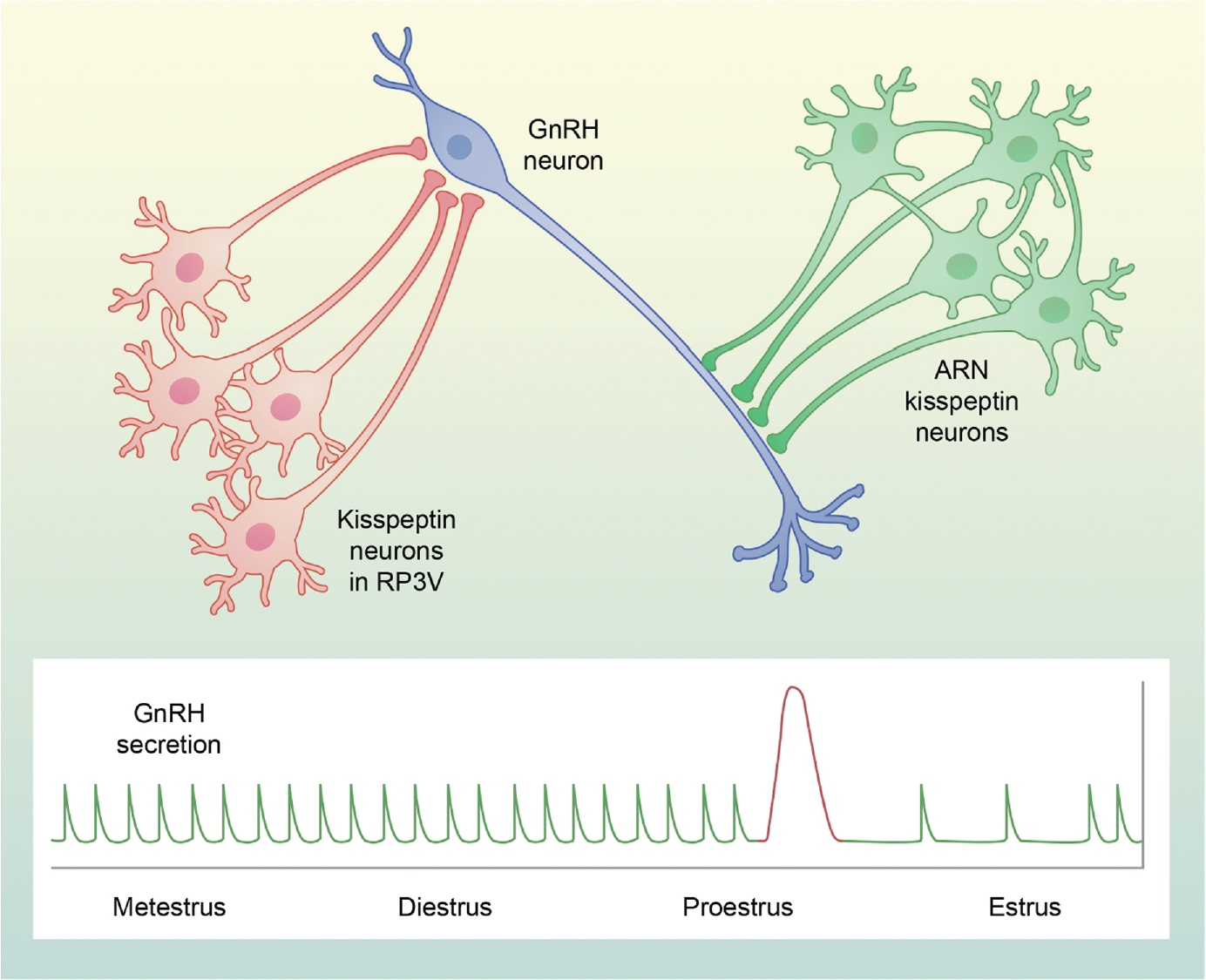FIGURE 1.

Schematic illustrating the role of kisspeptin neurons in the control of pulsatile and surge secretion of gonadotropin-releasing hormone (GnRH) in mice and rats. Arcuate nucleus (ARN) kisspeptin (KNDy) neurons (green) are an interconnected network that fires synchronously to release kisspeptin on to GnRH (blue) dendrons and drive GnRH and luteinising hormone (LH) pulses (green at bottom) at a constant frequency during most of the estrous cycle. Rostral periventricular area of the third ventricle (RP3V) kisspeptin neurons (red) are stimulated by rising titers of estradiol on proestrus and triggered by a signal from the suprachiasmatic nucleus (not shown) to stimulate GnRH cells bodies to release GnRH during the LH surge (red at bottom) on the afternoon of proestrus. Note that, although KNDy neurons are considered to be the GnRH pulse generator in other species, they may act not solely on GnRH dendrons, but rather on cell bodies in the mediobasal hypothalamus (for details, see text)
